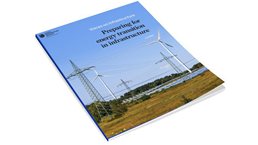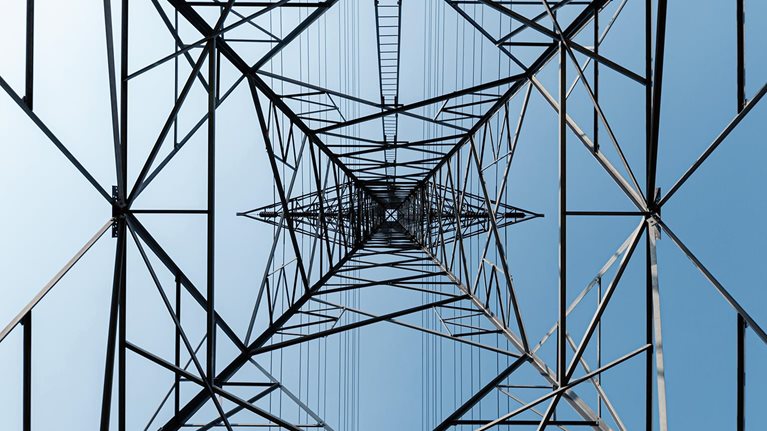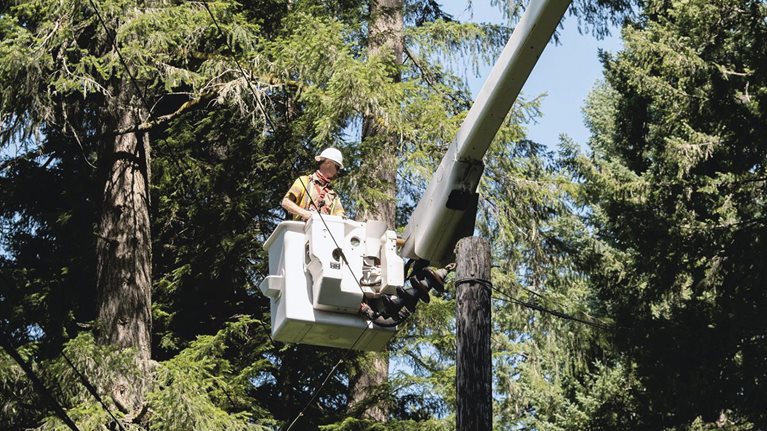In 2017, Wood acquired engineering and project-management company Amec Foster Wheeler, greatly expanding Wood’s process engineering capabilities in industries such as oil and gas, chemicals, and mining. The acquisition also expanded Wood’s focus on a number of technologies expected to play key roles in the shift away from fossil fuels.
The following lightly edited interview was conducted by McKinsey’s Giorgio Bresciani in June 2021.
McKinsey: What is at the top of your agenda and Wood’s in terms of a strategy for the energy transition, and why?
Robin Watson: First, we see an unstoppable momentum to the realization that the energy industry does, in fact, need a transition. That’s something that we’ve really been conscious of for the past six or seven years, which culminated in our acquisition of Amec Foster Wheeler. The breadth of end markets they offered helped us reposition Wood to respond to changing attitudes in energy and future market opportunities.
The conventional energy business has a role to play on two fronts. One is as a primary fuel source. There are few alternatives as reliable as fossil fuels are today. That is changing, of course, but the transition to renewables needs to be secure. Similarly, the exploration and production of fossil fuels needs to lower its carbon emissions, whether that be using carbon capture and storage or embracing alternative power sources to provide the energy for extraction and supply.
We put a range of scenarios together from this perspective, and then we pitched the strategy that we felt was a good blend.
McKinsey: On that point, how should we go about decarbonizing the oil and gas industry while maintaining the reliability of the supply needed?
Robin Watson: We can now use digital solutions in a way that gives us a more accurate interpretation of what is happening in real time, and I think that’s an important step forward.
We’re looking to make the configuration as efficient and effective as possible, with as low a carbon footprint as possible, and technology is part of the solution. We’re excited by what carbon capture can do in terms of sustaining a secure energy supply while reducing the impact to the environment. We’ve been involved in many carbon-capture-and-storage studies over the past 30 years. It’s only a matter of time before it becomes a big part of the energy transition story.
Finally, we need to accelerate the focus on integrating renewable electricity from sources such as wind and solar, and ensuring a certain level of reliability, perhaps supplemented by fossil fuels, rather than fossil fuels being supplemented by renewable sources.
McKinsey: When you look at the opportunities presented by deploying these new technologies, what do you see as the bright spots for the future?
Robin Watson: There are a number of bright spots in terms of our work on projects for established energy companies. For example, we are working on an industry-leading project offshore in the North Sea where we put wind-generated electricity into an offshore installation. We’ve also done work on refineries in Europe where we used solar photovoltaic solutions to provide the primary supply of electricity.
One of the reasons we repositioned ourselves through the Amec Foster Wheeler acquisition was for the process-engineering capabilities it afforded us. Process engineers are some of the brightest, most well-equipped people on the planet to unlock carbon-capture-and-storage challenges, such as the technical considerations around making jet fuel from renewable resources. That’s really exciting. You can have a jet flying with essentially no carbon footprint. Only 15 or 20 years ago, that would have been science fiction.
We need to invest the time and energy necessary to unlock these things from a consumption perspective, minimizing the impact to the environment. This will require either fiscal regime or capital allocation—probably both—as well as recognizing that everyone in society needs to contribute. I’m encouraged by some of the moves the big energy companies have taken, such as taking the proceeds from some of the conventional energy businesses and redeploying the capital into alternative carbon-capture solutions.

Voices on Infrastructure: Preparing for energy transition in infrastructure
McKinsey: How do you see design solutions evolving for companies to meet their commitments around Scopes 1, 2, and 3, both on current operations and for new projects?
Robin Watson: It’s making sure the current operations are energy efficient and that waste is minimized. It’s looking at the embedded supply chain and asking yourself, “Can people work remotely? What logistics are needed to support an industrial cluster?”
These decisions should be made at the front end of a project. The things we do when we assess environmental impact go far beyond simply asking, “Where is the land? What is the access? How do we make sure it’s far from the waterways?”
We use our technical knowledge to make things lighter, smaller, even unmanned. We can provide a microgrid to provide circular electrification, or we can use four smaller, electrically powered units rather than two larger gas-powered units. In chemicals, forming an industrial cluster, rather than just having a refinery, can provide the polymers and products needed to substitute carbon-intensive products such as steel and concrete.
McKinsey: What roles will automation, digital technologies, and artificial intelligence play in the energy transition, specifically in how they change the project space?
Robin Watson: In terms of engineering, we often question how we can use technology to be more efficient and more effective. The cloud allows us to distribute our engineering across the globe, which can provide insights from different sectors. For example, an insight from the automotive sector can be replicated in the process industry.
We’ve provided around 120 steam-methane reforming hydrogen units over the past 60 years, and we see a real pathway to carbon capture and storage of these units. It’s only a matter of time before blue hydrogen is scalable from a technology perspective. That’s a good example of using broader process-technology skills to make and move hydrogen differently. Shifting the infrastructure of natural gas onto blue hydrogen will enable us to deliver cleaner fuel to homes. From there, we can connect to multiple end markets, such as hydrogen fuel cells and buses and trucks.
Technology can also provide different technical solutions. If someone is looking for a steam-methane reformer unit, for instance, we can suggest going with carbon-capture technology instead. It might be useful to capture the carbon in one site but difficult to store it because of the physical location.
McKinsey: Building on this, how have customer needs evolved over the past three to five years?
Robin Watson: In the past ten years, probably 60 percent of our business has been dictated by fewer than a dozen customers. Ninety percent of what we did was upstream oil and gas. Now, with the repositioning of the business, our top 20 customers account for less than 40 percent of our revenue base. Today, our customers are focused on optimizing the performance of their existing assets, which has developed into optimizing the sustainable performance of existing assets.
We’re probably doing more on onshore solar in the United States than most of the large energy companies because there are more utilities than developers. But we see energy companies coming into that space. We’ve taken some of our international oil company customers into that market because we’ve got good knowledge. We know the whys and wherefores of successfully completing these projects.
McKinsey: Finally, what do you think Wood will look like in 2030?
Robin Watson: We’re going to be working heavily across all aspects of the energy transition. Augmented and virtual reality already let us take clients to the seabed if they’re putting in a new subsea system, or piling a wind turbine, or if they want a floating facility for offshore wind.
Environmental, social, and governance goals, worker welfare, and workers’ rights are things we’re also very proud of at Wood. We’ve got a million workers in the world who are much better protected through our Building Responsibly program. In addition, we’re actively working on inclusivity in terms of not just gender but also representation of different nationalities across our senior management team. Ultimately, I hope to better reflect the 60 countries we operate in.
This interview first appeared in the July edition of the Global Infrastructure Initiative’s Voices on Infrastructure.

